This is a follow-up to the series that Rohit has been working on over the past few weeks. Specifically, he has been looking at the various Netgear GS305P options. As a result, we are asking for reader feedback. Specifically around how we should treat what Netgear has done in the space.
Netgear Making Simple PoE Switches too Complex
For this one, we have a video that you can see here as well. In the first few minutes, some keen readers may get a glimpse into STH behind the scenes.
As always we suggest opening that in a new YouTube tab, window, or app for the best viewing experience.
The crux of the challenge is what we found over the past month or so around the Netgear GS305P. In our first review, the Netgear GS305P 55W 5-port PoE Switch Review, we found a unit that was a PoE switch and that had a 55W power budget for the simple unmanaged switch.
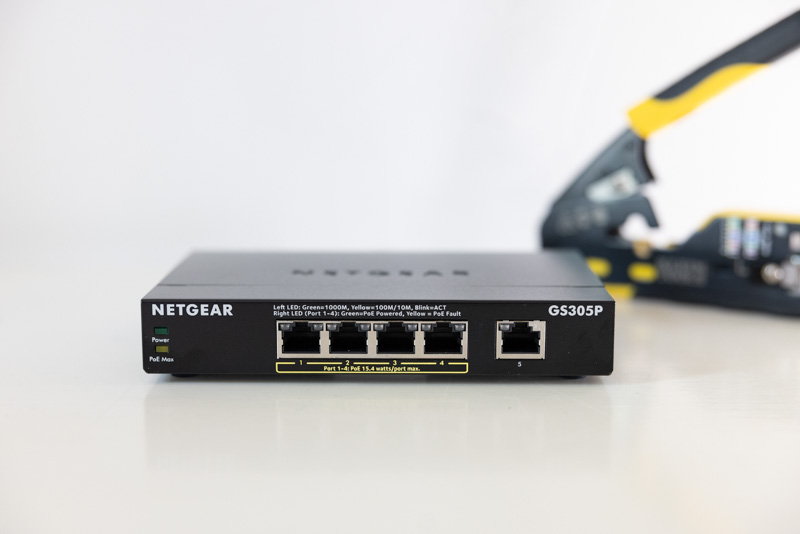
As I was doing my quick read of Rohit’s piece, I saw that the specs on Amazon.com had changed since we had purchased the unit two weeks earlier. The GS305P now says POE+ and 63W total PoE power budget while being $5 less expensive.
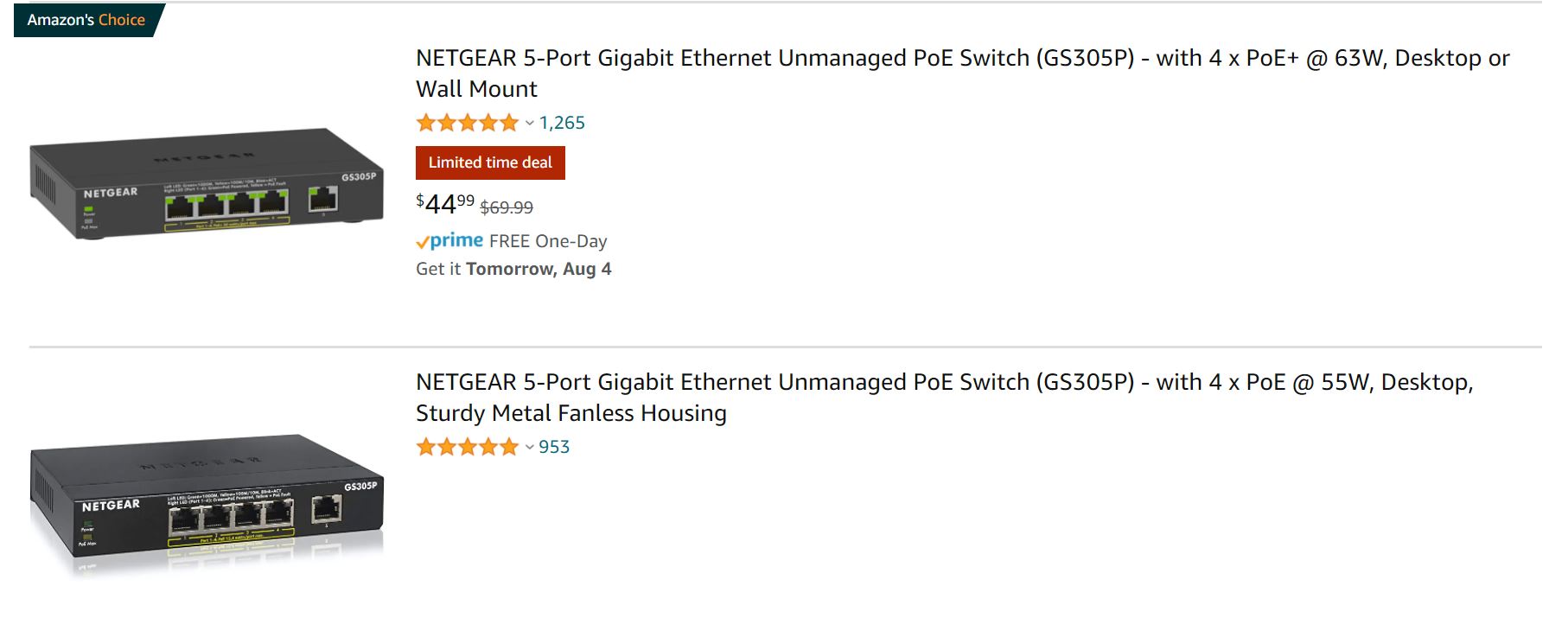
At first, we saw the specs that looked similar to the Netgear GS305EP we reviewed. While the PoE figures and a lot of the look were similar to the new specs on Amazon, the “E” in the model name noted that this switch has Layer 2 management features certainly making it a managed switch instead of an unmanaged switch.
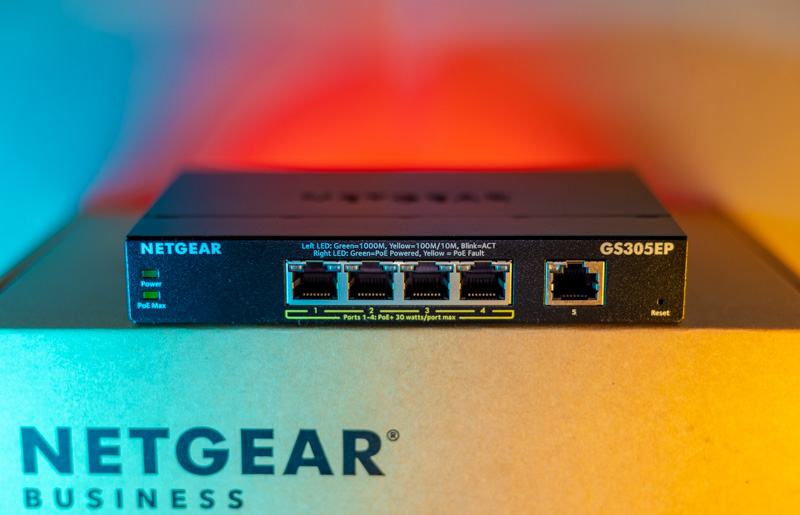
Our second GS305P arrived and one could quickly be confused for mistaking it for the one we reviewed two weeks earlier. It still said GS305P. The only way to know this was something different was to look at the Yellow text that says “PoE+ 30watts/ port max” telling us those two specs. Also, the input voltage was adjusted slightly.
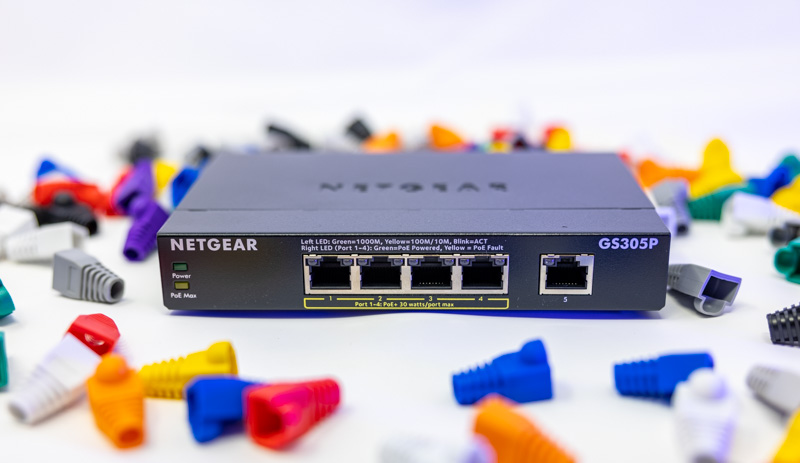
We asked Netgear and were told that the new version is the “v2” of the product. Armed with that information, we found that on the bottom of the box there was a sticker that said “GS305P-200NAS.” The rest of the markings on the box simply said “GS305P” so this was the location to know it was a different unit.
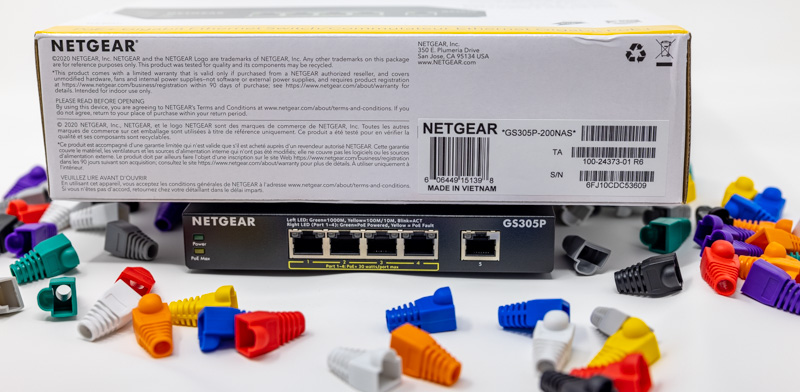
Doing some looking at the unit itself, we did not see the “GS305P-200NAS” on the bottom of the unit. Instead, we saw the GS305Pv2 as the model. The only model naming that was shared between the box and the switch itself was “GS305P”.
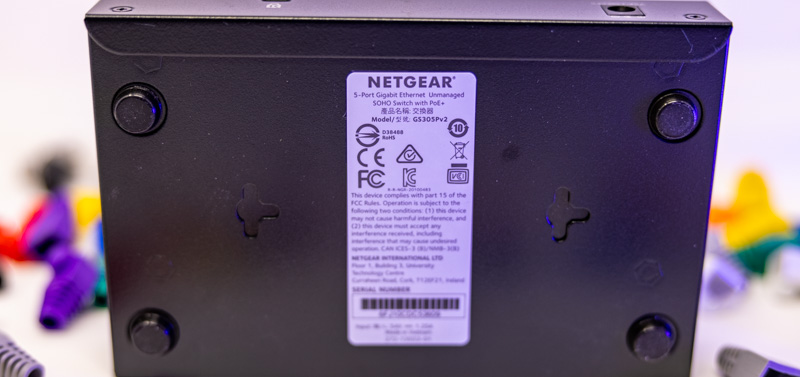
We also confirmed that the switches were using the same Realtek switch chip. It seems as though the v2 was mostly an update to add PoE+ and the higher-power 68W power adapter, both features we saw on the GS305EP.
Just for some sense of how confusing this all is, here is the Netgear image supplied to Amazon about the new model. We can see PoE+ and 63W power budget listed. The challenge is that the image of the switch shows that it only has a “15.4 watts/port max” and 48V input. It seems as though Netgear marketing even is getting V1 and V2 confused.
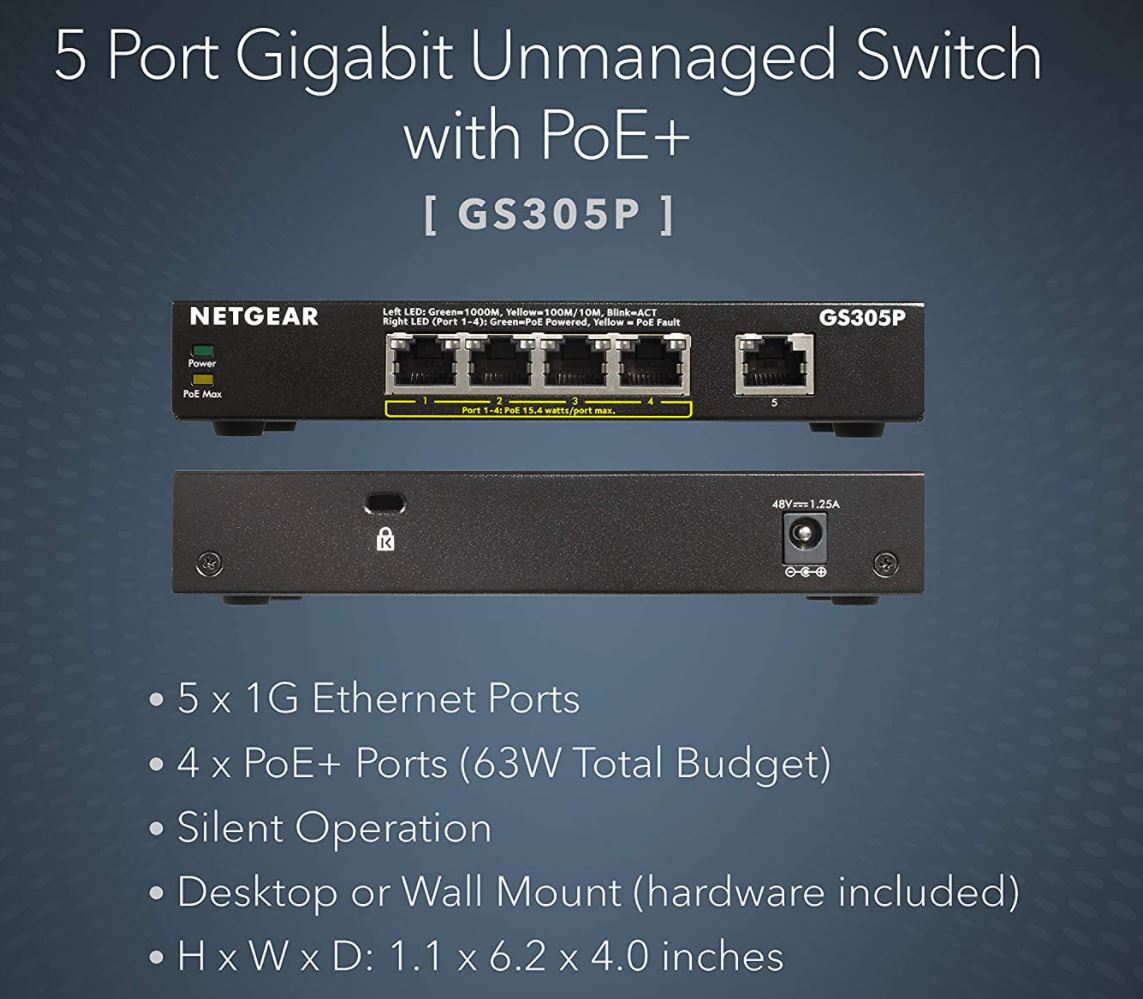
In light of our WD Red SMR vs CMR and ADATA XPG SX8200 Pro component swap pieces that Will did, we wanted to get a sense from our readers how to treat this swap. It is a clear upgrade of the power specs with the same switch chip.
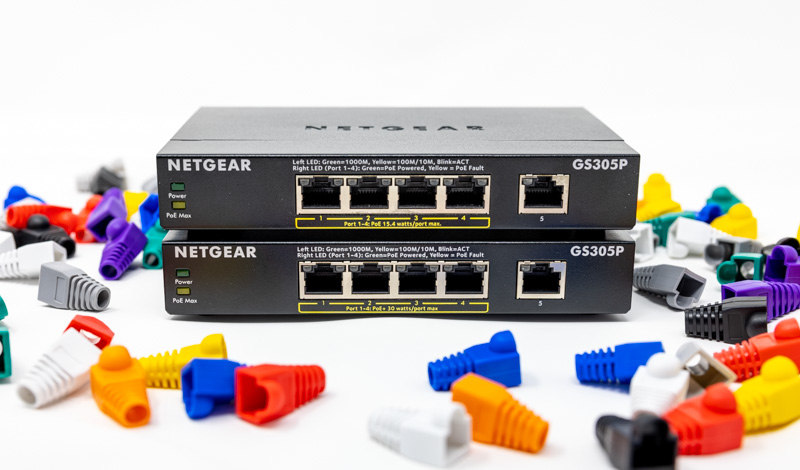
Still, users searching casually for the GS305P will see different information for the V1 and V2 because Netgear simply did not mark the new unit V2 everywhere. We can imagine there are those out there that will get the wrong information about capabilities due to this omission.
Final Words
Personally, I find this one to be less sensitive than it would have been if we had a major decrease in specs. These are relatively low-end devices mostly purchased based on price and a minimum set of features. Since the PoE+ upgrade using the same switch chip is a net upgrade, I am inclined to give this a pass.
At the same time, I do feel that simply labeling the new switch “v2” everywhere would have had a positive impact on the market. There is a very valid argument that changing specs without changing the model name (conspicuously) can be very confusing.
Still, I would like your feedback on this one. How do you think we should handle cases like this going forward?

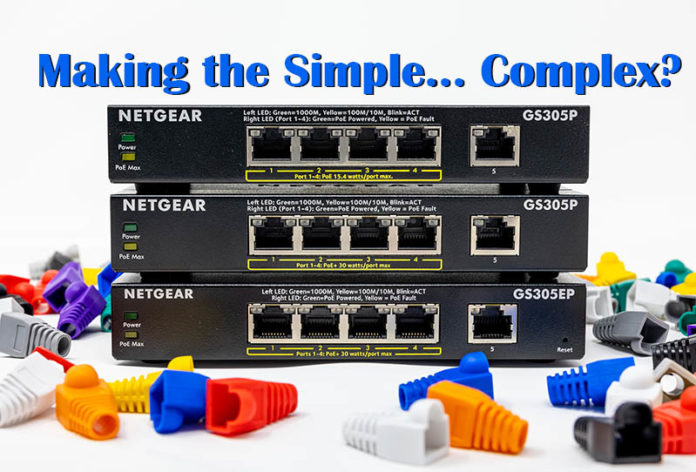



I think the modern reality is that retailers control manufacturers these days. Such retailers are more concerned with disposing of old stock and not the brand reputation of the manufacturer, reliability or customer service.
Things like this can be infuriating. How can I be sure that I get the v2 if I know that the v1 will not do? Not every country has Amazon where you can send back anything for no/any reason. Even if the outside box has enough information to decide the revision, sending it back means one wasted ~10 USD and a bunch of time shipping a ~45 USD product, and ended up with nothing.
This only gets worse if you need to unbox the product to determine the revision. At which point the retailer wont take it back anymore, unless you make a warranty claim. Which you cannot do, because “not the revision I expected” is not a warranty problem.
Netgear equals AMD, a complete garbage.
Only a fool buys something from AMD or Netgear.
@Koss: idk where you live, but in most countries you can send back stuff within a certain timeframe, without any reason. And to be honest, in my country (and I assume others) most tech retailers do point it out that it’s v2. if not, calling them is probably the best before ordering.
I’ve been using Netgear for the better part of +25 years, I started with an Netgear 5 port 10mb/s hub, which was a major upgrade from coax cabling, and what a waste of cable compared to coax. My first switch came only later. Things have changed since then.
I have always found Netgear labeling horrifying, you look at the label at the box and then see what is only the label on the product it self, and 5 out of 10 times they are not close to being the same.
The only good thing about buying these things at Amazon is that it’s easy to return the box, but would it not be better if Netgear would label their products correctly – so that normal people could figure out what they buy prior to unboxing it.
Netgear has been doing the versioning thing for ages, much like linksys did before and during the early cisco days.
At least Netgear’s method is fairly easy to keep track of, the ordering or part number for sa network switch is something like GS###xx-###NA for smaller switches (larger ones are GSM####xx)
The marketed model on the otherhand is simplified (or completely different in the case of the M4300-8x8f for example which is actually xsm4316s ) to make the appearance less confusing and daunting to the customer, which is a mixed bag.
BUT at least Netgear puts it all on the label! Other brands have not in the past !
Anecdotical Evidence from personal Experience with Netgear biz products from some years ago:
Purchased a Netgear ProSecure UTM5 for an SMB client. Fighting with it for days to ensure IPsec firewall works (the lower model didn’t provide native IPsec VPN client, using free 3rd party one)
Whatever I try, only works before I hit save config. After long and very tiring troubleshooting and working with useless tech support, I realized what’s happening. In management web UI the VPN shared password field is visually obscured by ************ for better security. Ok, that’s per industry norm. What wasn’t the industry norm is saving the config to flash changed the shared VPN password/key to an actual row of asterisks, ie literary this would be the shared VPN key: ************
not to mention other “fun” stuff, like turning off remote access also turned off management web ui.
I agree it is confusing, and that’s not good. I do not think it rises to the level of perfidy displayed in the unmarked SMR drive scandal. It is somewhat trivial IMO.
My $0.02.
Sadly Netgear have been doing this for years.
At one point I owned three different version of the classic blue 8-port Gigabit switch. All were called GS108 but they had small differences with the power adapters and location of power plugs.
I think they did the same thing with the POE version of the GS108. The GS108PEv3 had a POE budget of 53W. The GS108PEv1 and GS108EPEv2 switches were 45W.
I don’t like it but as another commenter pointed out, it is likely done to allow retailers to keep selling the parts as the same SKU without having to phase out older models.
Although I would prefer if the v1, v2, v3 label was added to the product listings. I still prefer Netgear’s current approach to the one used by other manufacturers who change the product number each model year even when there is no difference to the specifications.
I don’t think I have any issue with what they did in this instance. They kept the same chip, but improved the power output from POE to POE+. It looks like v2 does everything the original did, plus some. Sounds like a win for the consumer.
There is v3 now. But what is the difference?